Departure Update
Getting to AGO 4 has proven to be difficult. Today our plane was delayed yet again due to bad weather at the fuel cache halfway between the South Pole Station and AGO 4. Although the pilots have enough fuel to bring us to AGO 4, if the ground at AGO 4 is unstable, they will not be able to land and will have to bring us back to the station. They do not have enough fuel to make the round trip so the fuel cache could be an important stopping point. Since there was bad weather there, the pilots cannot risk flying. Hopefully things will be better tomorrow!
Into the Growth Chamber
The extra time at the station has allowed me to visit different people here. The other day I met Lane Patterson, who is the South Pole Food Growth Chamber Specialist. When I first saw the sign for the growth chamber, I imagined scientists in white lab coats trying to create life in test tubes. The growth chamber is a much less sterile place--it's the greenhouse here. Fruits and vegetables that we eat in the galley are grown right at the station!
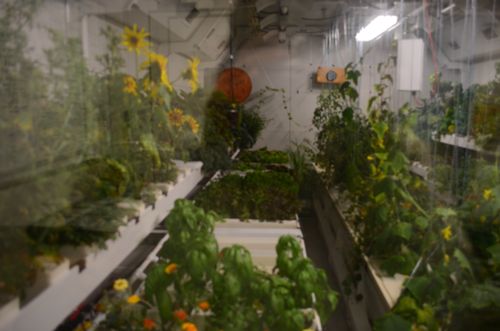
A prototype for outer space!?
Back in the U.S., Lane is a biosystems engineer. You can figure out what that means by breaking down his job title: bio means life and engineers build or create things: he builds life systems! Lane works at the Agricultural Center at the University of Arizona. When he's not virtually checking into the growth chamber here on the station through a camera, he is working on a prototype for a space lunar greenhouse lab. Lane and other scientists are trying to see if plants could provide enough oxygen to keep humans alive in outer space. They have created a greenhouse similar to the one at the South Pole and monitor how energy, water, carbon dioxide and oxygen (among other things) are balanced through their natural cycles. They are hoping to test this idea outside of the South Pole.
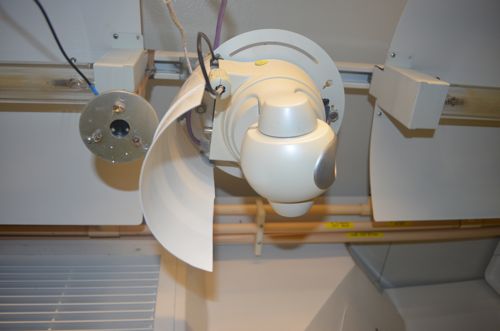
The science behind growing plants
Growing plants at the South Pole is a lot different than growing plants in a garden back home. There is no soil here. However, Lane and his team make sure the plants are provided with everything they need to grow. He essentially recreates the correct climate for the plants.
Nutrients
Although the plant roots are soil-free, they still need nutrients. The water that is fed to the plants is packed full of macro and micronutrients. These provide the plants with all the nutrients they need to grow. The nutrients can be provided in the form of salts. Although the term salt might make you think of table salt, in science, salt refers to a metal with a nonmetal. For example, Calcium Nitrate is a salt that provides plants with important nutrients they need to grow.
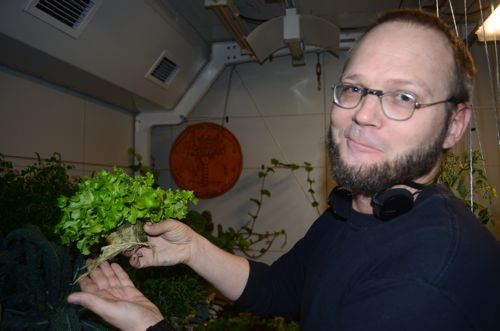
Tricking the plants
Different plants have different nutrient needs and therefore are provided with different nutrient solutions. For example, the plants that produce edible leaves (e.g., lettuce) have different needs than plants that produce edible fruits (e.g., tomatoes, cucumbers, etc.). Lane is able to trick the fruit-producing plants. He provides the plants with lots of nutrients, which stress them so they think they will die soon. They then produce their fruit more quickly, but since Lane can control the amount of nutrients the plant receives, they do not die. Lane also takes out smaller fruits to give more energy to the larger fruits. Luckily I was there when he picked some baby cucumbers from the plants and was able to eat them. They were good!
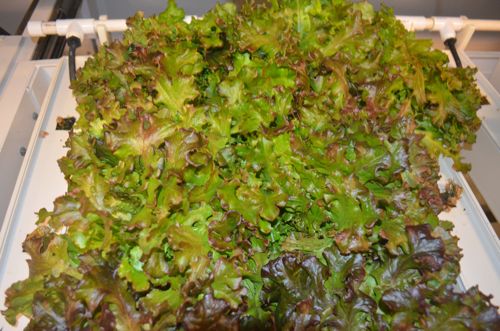
Light
What else does a plant need to grow? Light of course! The plants that are currently in the greenhouse have a 14 hour photo (light) period. Really bright lights in the greenhouse provide the plants with light that has wavelengths between 700 and 400 nanometers. These are the wavelengths of light that the plants use to photosynthesize, called Photosynthetic Active Radiation (PAR). A pyranometer (shown in the photo below) measures the amount and wavelengths of light to make sure the plants are getting what they need. I will be installing a similar pyranometer on the weather station, but it will record wavelengths of 300 - 1100 nanometers.
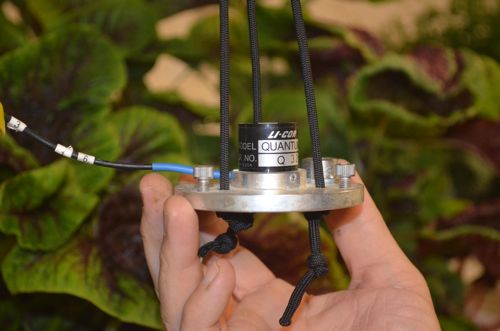
Water
The plants need lots of water to stay healthy. Walking into the greenhouse felt like walking into another climate, which was exactly what I was doing! The big difference I noticed between the greenhouse and the rest of the station was the level of humidity in the air. Humidity is the amount of moisture or water vapor in the air. The South Pole is one of the driest places on earth and has humidity in the single digits. The greenhouse is packed with water vapor--it has an absolute humidity of 60! Absolute humidity is the ratio of kilograms of water vapor to kilograms of dry air.
Water Cycle
The greenhouse imitates nature. Just like in nature, there is a water cycle in the greenhouse. The plants take in water vapor in the air through their leaves and liquid water through their roots, totaling about 6 kilograms of water a day. This water doesn't stay in the plants, but cycles through them and back into the air. Around 140 kilograms of water cycles through the plants every day. Some of the ways that water travels through the greenhouse are listed below:
*Photosynthesis: The plants take in water from their roots and carbon dioxide from their leaves to create glucose (sugar) and oxygen with the help of light energy. This means that water travels into the cells of the plants.
*Respiration: Just like animals, plants also respire. They take in oxygen from the air and glucose that they create and give off carbon dioxide and water vapor. This is one way that water leaves the plant.
*Transpiration: Water molecules also enter and leave the plant through tiny openings in their leaves called stomata.
*Condensation: Since the room is full of water vapor, something that is cold will allow the water vapor to condense on the outside of it. If you've ever watched water form on the outside of a cold glass, you've witnessed condensation. There is a condenser in the greenhouse that uses the cold air from outside to cool down the water vapor in the greenhouse, allowing it to return to liquid form and be reused for the plants. 160 liters of water make this transformation everyday.
*Evaporation: The greenhouse is pretty warm, which allows the liquid water that evaporate into the air. This water vapor will later condense and return back to liquid water.
Cool Careers in Antarctica
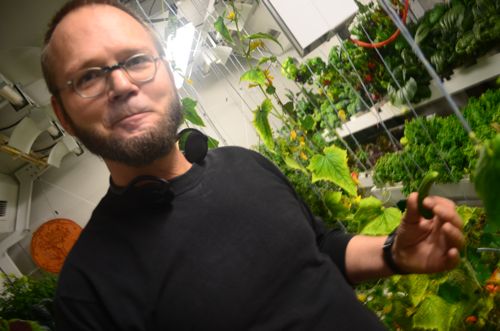
Lane flies down to Antarctica to work at the growth chamber for a few weeks each year and spends the rest of the year checking in virtually from the University of Arizona. His most memorable experience in Antarctica is working in the greenhouse. He likes how providing a hospitable environment for plants in Antarctica parallels outer space. Lane likes asking big questions and using science to answer them. Right now, Lane's big question is: how long does it take to keep a human alive in an inhospitable environment? Lane also is conscientious about the impact he makes in the world. He considers how many resources he takes from the world and how his activities affect the planet. He strives to make the planet better and believes that knowing more about how humans impact the environment and what humans need to survive is an important step in doing so. He reminded me that we are all components of the planet and its resources, which we can remember every time we breathe or eat a meal.
Questions
What aspects of the greenhouse are similar to a plant growing naturally where you live? What aspects are different?
Why would growing plants be an important aspect of space travel? How could plants benefit a human in space?
What are some ways that you impact the environment? Think about all the resources you use just to brush your teeth every morning!
Math Connection
If a plant takes in about 160 liters of water a day, and releases (through transpiration, respiration, and evaporation) 150 liters of water, how much water does the plant gain per day?
If there is about 40% humidity at sea level, and 80% humidity in the greenhouse, what is the ratio of humidity at sea level to the greenhouse?
If there is about 5% humidity at the station and 80% humidity in the greenhouse, what is the ratio of humidity at the station to humdity at the greenhouse?

Comments